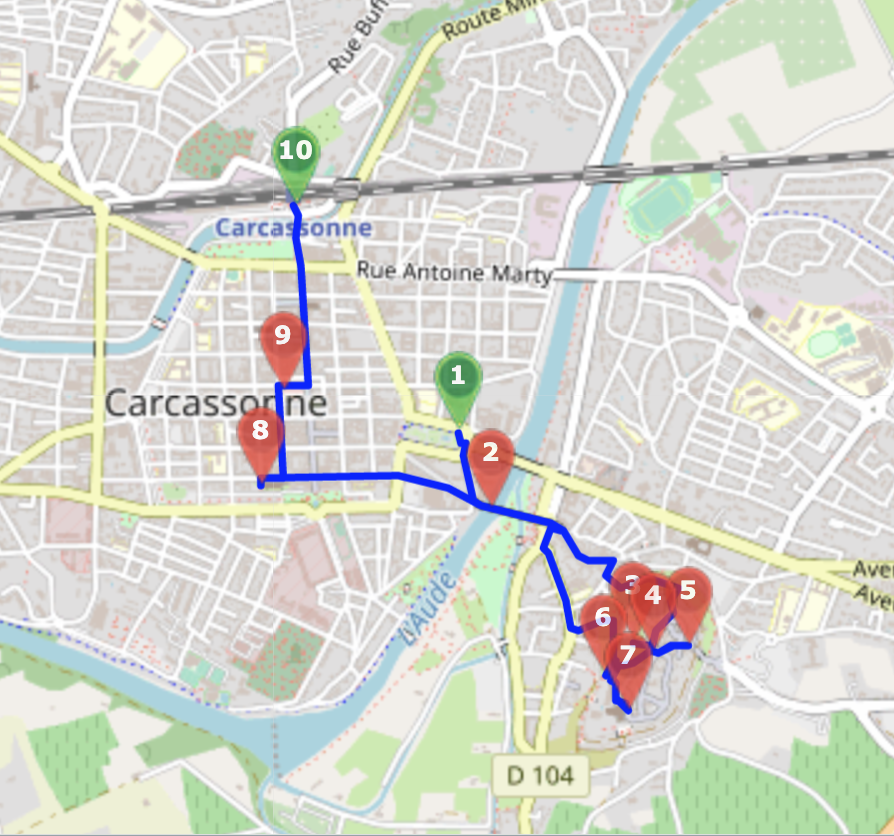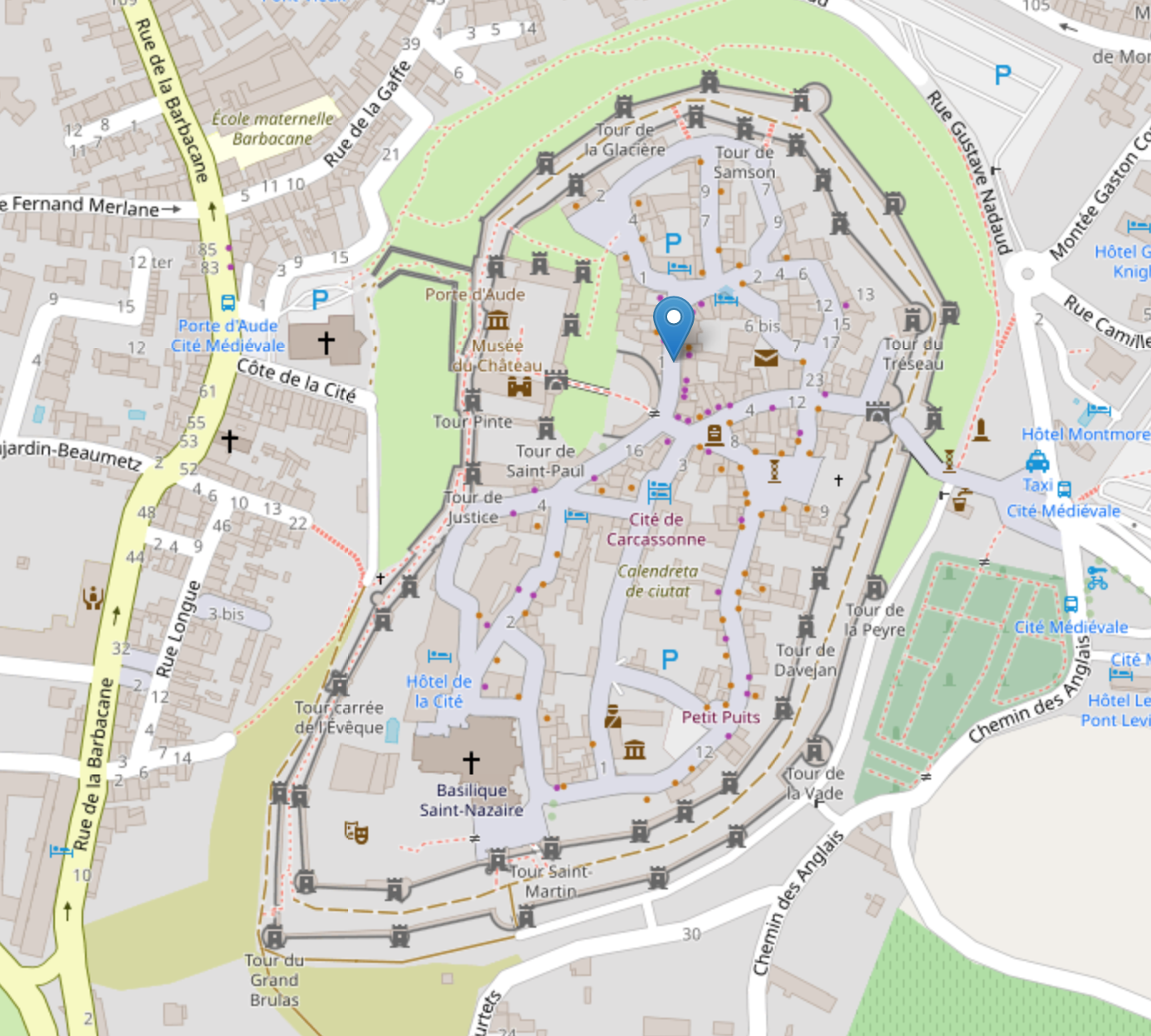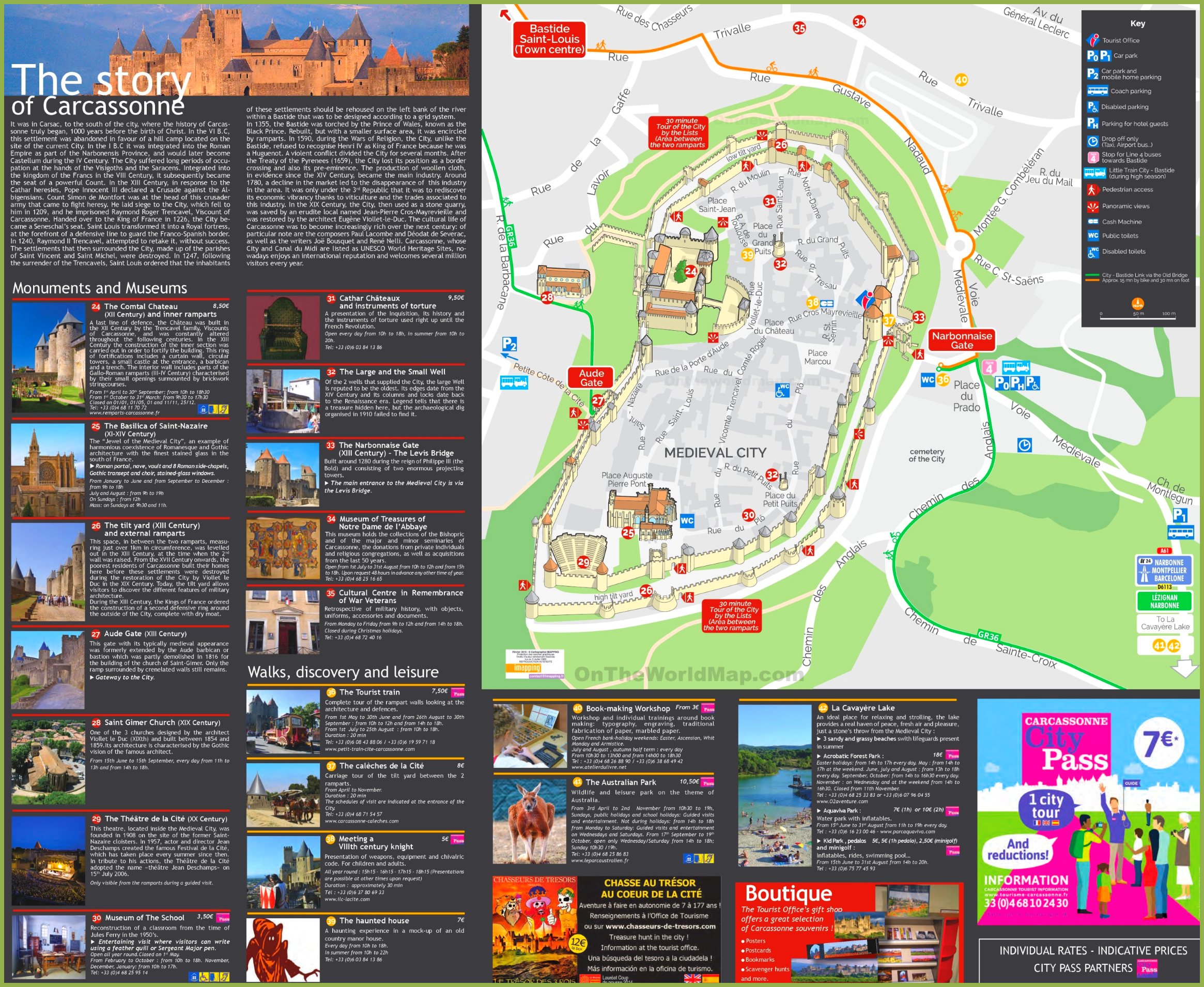Carcassonne
Page content

-
You can tour all districts of Carcassonne by walking or cycling.
1. Top sights
1.1 Place Gambetta (Gambetta Square)
- It is an open space with two rows of trees, garden beds, plenty of seating, and food kiosks.
- 10 minutes is enough for a quick walk through the park.
1.2 Le Pont Vieux (Old Bridge)
- It was reconstructed in the 14th century.
- It links the two cities of Carcassonne together.
- It is the best place to get wonderful views of the city.
1.3 Chateau et Remparts (Castle and Ramparts)
- A ticket is required.
- Openning hours
- It’s just a 10-min walk, crossing the river Aude on the Pont-Vieux bridge.
1.3.1 The château Comtal

- A one-hour visit with a guide will allow you to understand one thousand years of history in the Cité, its interior and exterior defence system, and the 19th century restoration by Viollet-le-Duc.
- You will admire its Romanesque frescoes, its Roman, Romanesque and Gothic architectural treasures, Lady Carcas, and the city’s archaeological collections.
- Chateau was defended by two barbicans:one to the east, which is now the entrance and ticket office, and the other to the west, towards the Aude, now partially in ruin.
- The exceptional view and photo opportunity of the château, from place Saint-Jean, a restaurant terrace or the small square on la rue de la porte d’Aude.
1.3.2 The Northern Gallo-Roman rampart
- A 20-min visit is enough.
- Its superbly preserved ancient round towers, stunning panoramic views across the Montagne Noire, and 1,000 years of military architecture.
- Exit at Porte Narbonnaise.
1.3.3 The western medieval rampart
- A 30-min visit is enough.
- In the 13th century, Saint-Louis and his successors had a second wall built, with round, often low towers with no roof.
- The bishop’s square tower, the Cathars and the inquisition tower, Viollet-le-Duc’s restoration work, spectacular views across the city, the basilica of Saint-Nazaire, the theatre and the Pyrenees.
- Exit at the Saint-Nazaire tower.
1.4 Cité de Carcassonne (Fortified City of Carcassonne)

- It tooks approximately 3 hours.
- In 1997, UNESCO inscribed it as a World Heritage Site because it is an excellent example of a medieval fortified town whose massive defences were constructed on walls dating from Late Antiquity.
- Since the pre-Roman period, a fortified settlement has existed above the Aude plain.
- The city’s three kilometres of ramparts, two fortresses, four gates, 52 towers and arrow slits offer remarkable views of the surrounding area.
1.5 Porte Narbonnaise (Narbonnaise Gate)
- It is the main gate to the city.
- You can access Carcassonne through this gate.
- It was built during the reign of Phillipe III about 1280.
1.6 Porte de l’Aude (Aude Gate)
- It is one of the entrances to the fortress.
- Very picturesque course and magnificent view of the ramparts
1.7 Basilique Saint-Nazaire (Basilica of Saint-Nazaire)
- The “Jewel of the City” (11th-14th centuries)
- Saint Nazaire is an example of the harmonious coexistence between the Romanesque and Gothic, and whose stained glass windows are the most beautiful in the Midi region.
- The Visigoths built the original church on this site in the 6th century.
- Current was completed in the 12th century.
- The Gothic interior architecture and decorations include alternating round and square support pillars, the Saint-Pierre Vault, additional vaults with a Scandinavian influence, and the tomb of Bishop Radulphe.
1.8 Cathédrale Saint-Michel de Carcassonne (Carcassonne Cathedral)
- This Gothic cathedral dates from the 13th century.
- It was classified as a national monument.
1.9 Place Carnot (Carnot Square)
- 5 minutes is enough for a quick walk through the square.
- It is the central square of the lower town of Carcassonne.
- There is the fountain La Fontaine de Neptune in the middle of the square.
1.10 Gare de Carcassonne (Carcassonne Station)
- It was built in 1857.
- The fortified city is around a 30-45 minute walk, mostly uphill.